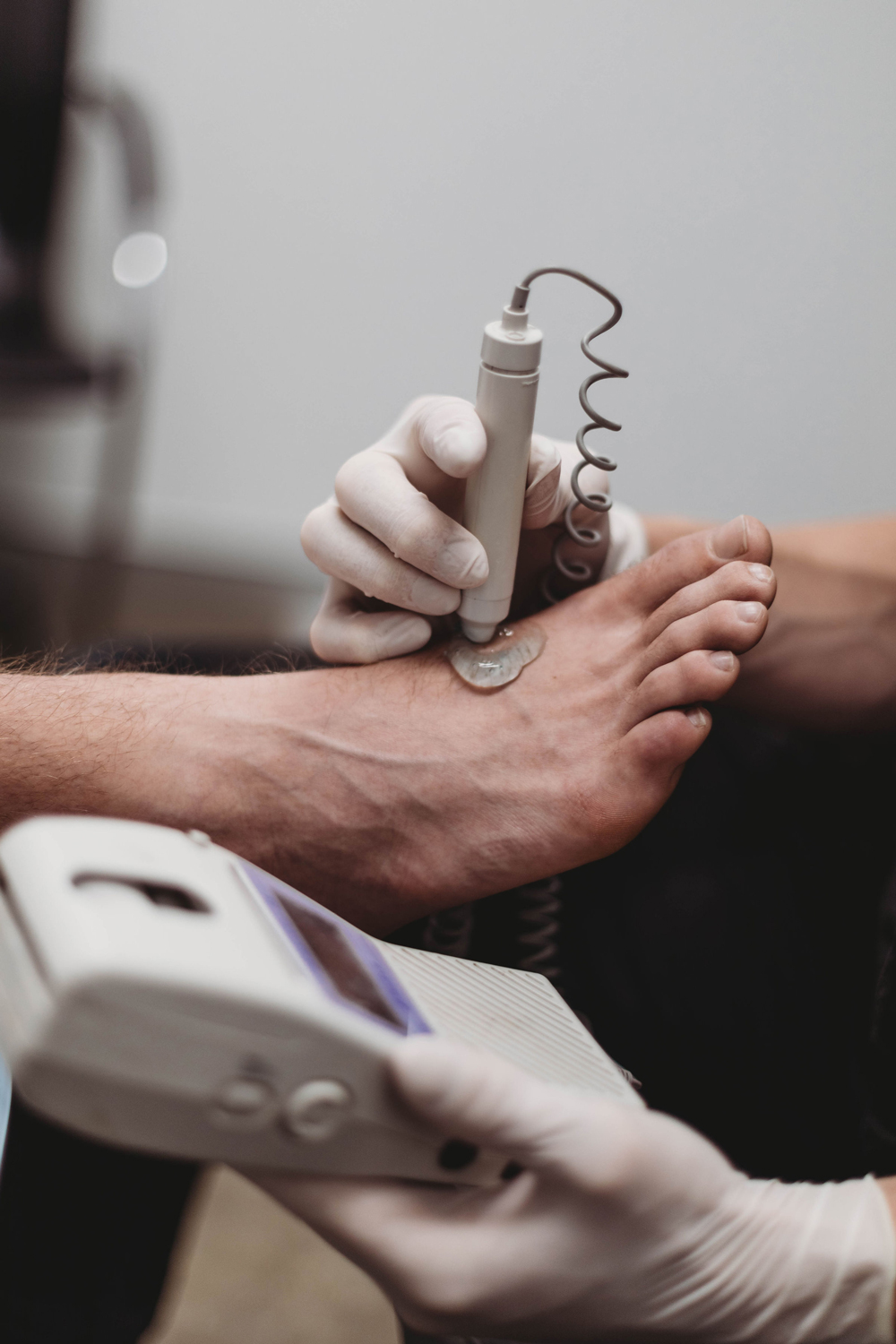Diabetes mellitus is a condition where the affected person has high blood sugar, either due to failure of insulin production in the pancreas (Type 1) or because the cells in their body are resistant to insulin (Type 2). The third type is gestational diabetes and can occur in pregnancy. Gestational diabetes may go on to become Type 2 diabetes but often resolves after childbirth.
National Diabetes Health Care Guidelines recommend people with diabetes have their feet checked by a podiatrist at least every 12 months.
Diabetes affects your feet in a few key ways:
- Diabetes can affect the nerves in your feet, meaning that you can’t feel as well. This is what we call peripheral neuropathy. This can change the way you walk or make you more susceptible to injury because you can’t feel pain. You can also get nerve pain that can get worse over time. Try products from your local chemist, such as Tiger Balm, to try and help with this pain, or let us suggest something on your next visit.
- Diabetes can affect the structure of your feet, by shortening key structures and making your feet less flexible. This may lead to changes in pressure and put you at more risk of injury.
- Diabetes changes the way blood flows to areas such as the feet. This means that your body’s normal response to injury is reduced and you are at risk of not healing if you develop a cut or sore. You are also much more at risk of blockages in arteries in the legs than someone without diabetes.
- Diabetes can affect cartilage, tendons, ligaments, and muscles to change their function and make them stiffer, compounding the risk of complications.
Our Management
Annual foot check-ups (or more regular if necessary) are essential to make sure your foot health is adequate and you haven’t developed any problems. We will ask you questions relating to your health and perform tests on your nerves and arteries in your feet to closely monitor for any risk factors. These non-invasive tests are painless, and we will make sure your visit is pleasant and comfortable. Removal and debridement of problem corns or callus will also be performed if necessary.
We can also help you select appropriate footwear that will best support and protect your feet, whilst ensuring you are walking in comfort. It is important to wear comfortable socks that are loose enough not to cut off your circulation when you have diabetes.
Be aware of…
Because of problems with healing, if you are cutting your own nails do not cut down the corners and risk an injury. If in doubt, let us do it for you. You should also book in to see us immediately if you experience sharp leg pain, cramps when walking or climbing stairs, new pain in your feet, coldness, or get a cut that is slow to heal. We also recommend you moisturise your feet regularly, but do not leave moisturiser between your toes.
Ulcers / Wounds
Developing wounds that do not heal, or ulcers on your feet can occur if you have diabetes due to changes to the blood flow and failure of wound healing. This risk is significantly higher if your blood glucose control is poor, and healing these can be very challenging.
Regular foot check-ups, good foot care and appropriate footwear can help prevent these problems from occurring. You should also be checking your own feet on a daily basis to look for any cuts or abrasions. Even minor lesions can progress to more severe wounds if they are not addressed appropriately
If you do have a current ulcer or wound, contact your GP or podiatrist immediately.
Doppler Ultrasound
Doppler Ultrasound is a handheld instrument (transducer) that is passed lightly over the skin above a blood vessel. The transducer sends and receives sound waves that are amplified through a microphone. The sound waves bounce off solid objects, including blood cells, which allows us to evaluate blood flow and detect any blockages or reduced blood flow in the major arteries.
How we use Doppler Ultrasound
At OnePointHealth, we perform a Doppler Ultrasound assessment on your feet at the end of your EPC program. We also perform it on your first visit if you are a Department of Veteran Affairs patient, and we will perform Doppler Ultrasound regardless, where there may be a concern or where your health has changed significantly between consultations.
The advantages of using Doppler Ultrasound
By using this technique, we get a much more valuable understanding of the blood flowing through two of the major arteries into the feet; the Dorsalis Pedis and Posterior Tibial arteries. This also allows us to determine changes to the blood supply to the feet between assessments, potentially allowing for an early diagnosis of any blood flow problems.













